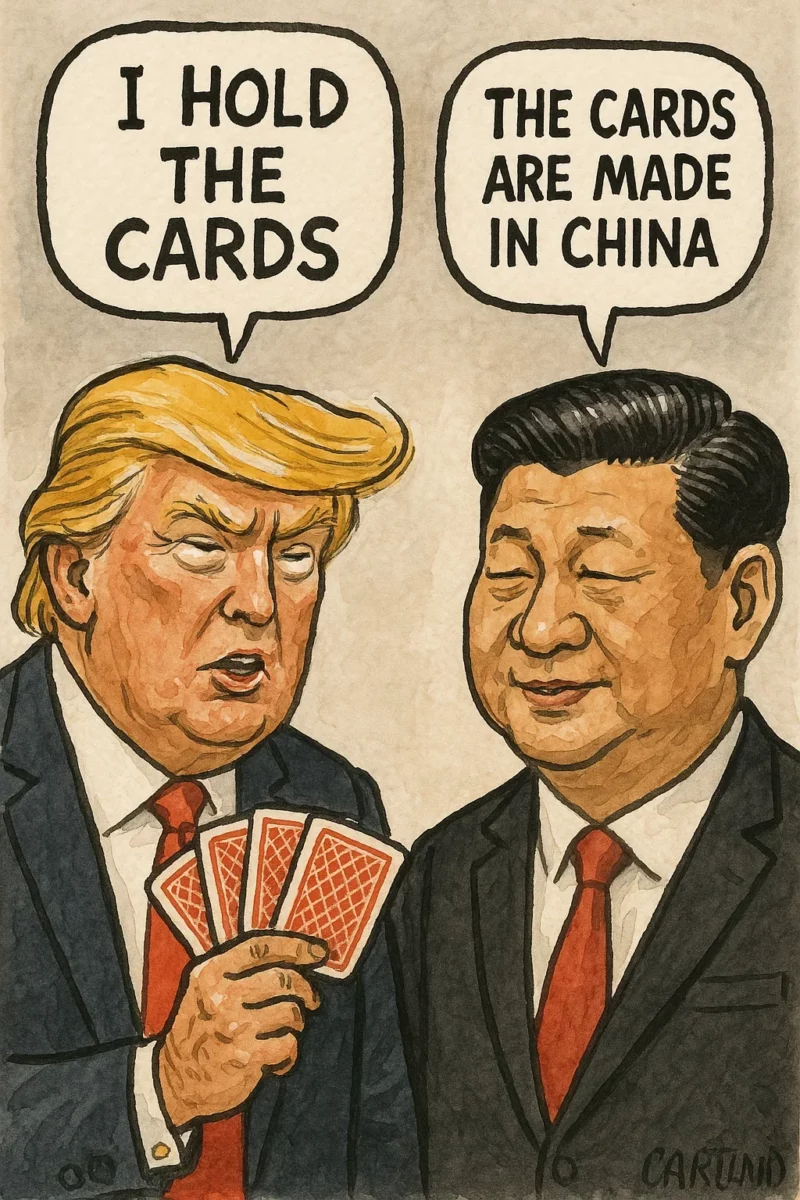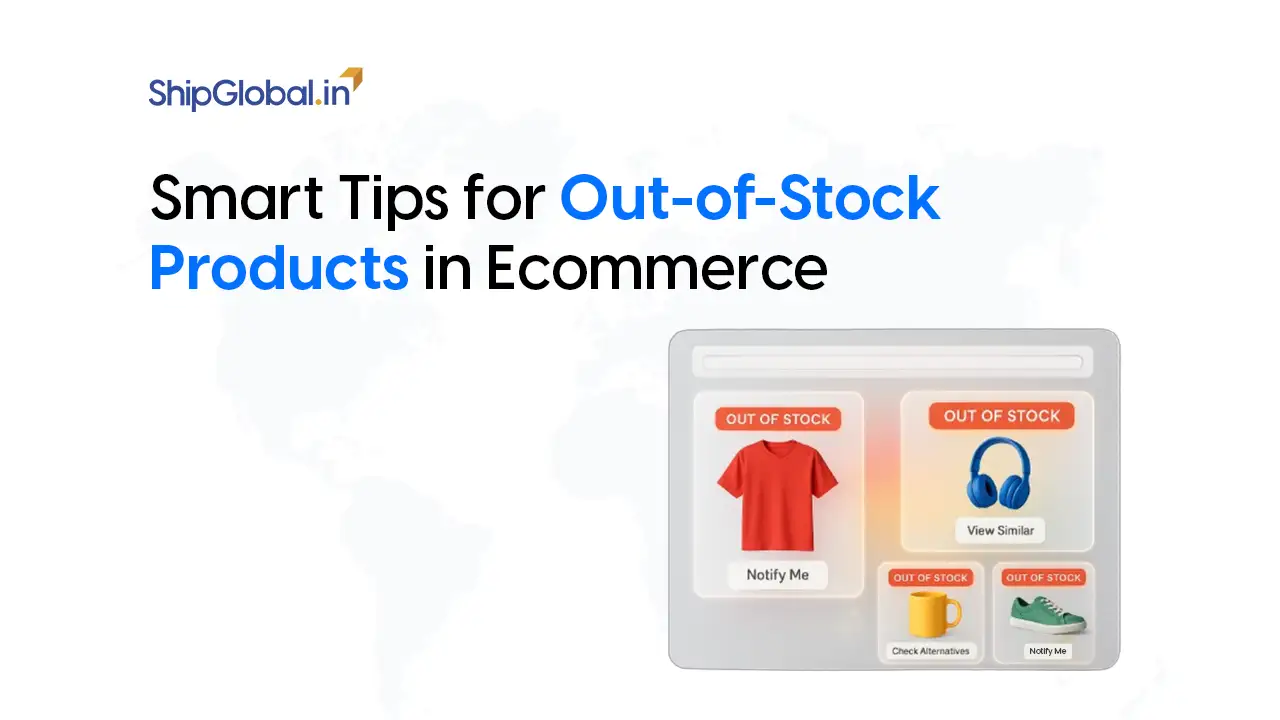The United States and China, two of the world’s biggest economies, are in the middle of a trade conflict that’s affecting businesses everywhere. With 145% tariffs imposed by the U.S. and 125% by China, what started as a disagreement has turned into a full-scale trade war. And while there’s been a temporary 90-day pause on new tariffs, the larger tension remains.
This has led to a ripple effect across the global supply chain. Prices are rising, deliveries are delayed, and businesses, big and small, are being forced to rethink where and how they trade.
But in this disruption lies a clear opportunity. India is being seen as a serious, stable alternative, and global buyers are already exploring new sourcing options.

At ShipGlobal, we work closely with Indian exporters every day. We’ve seen how this shift is opening new doors for garment sellers in Tiruppur, home décor brands in Jaipur, electronics manufacturers in Noida, and even solo entrepreneurs selling on Etsy or Amazon.
This isn’t about hype. It’s about timing, strategy, and support.
We’re here to make global shipping simple, efficient, and affordable so you can focus on growing your business.
Whether you’re just starting out or scaling up, this is your moment to step into global markets and we’ll be with you at every step.
What is a Trade War
A trade war happens when countries argue over trade and add tariffs (extra taxes) on each other’s goods. This is done to protect their own products.
When a country sells more than it buys, it has a trade surplus. When it buys more than it sells, it has a trade deficit. The U.S. has a trade deficit with China, which is one reason this trade war started.
Tip: Indian sellers can target countries facing a trade deficit — they’re the ones looking for new suppliers.
Economic Decoupling: Countries Moving Apart in Business
Many countries, especially the U.S., are slowly reducing their business ties with China. This is called economic decoupling. They want to depend less on one country and spread their risks.
What It Means for India:
- Big chance for Indian exporters to step in.
- Buyers across the world are looking for new, reliable suppliers.
Tip: Focus on building trust and keeping quality consistent. This builds long-term partnerships.
Global Supply Chain Disruption: Delays and Shortages Everywhere
Because of trade issues and global challenges, the global supply chain is facing delays. Goods take longer to reach, and shipping costs are rising.
India’s Advantage:
- We’re improving roads, ports, and air cargo facilities.
- More international buyers are open to sourcing directly from Indian businesses.
Tip: Keep your delivery timelines realistic and stay in touch with your buyers.
Rare Earth Export Ban: A Tech Industry Risk
Rare earth metals are used in gadgets, electric vehicles, and many machines. China controls most of these and has warned of export restrictions.
India’s Opportunity:
- Invest in alternative sources and cleaner technologies.
- Be part of the global tech supply chain.
Tip: Explore government support for tech exports and eco-friendly innovation.

Semiconductor Tariffs: Trouble in the Chip World
Chips (semiconductors) are used in everything from phones to cars. With new tariffs on Chinese chips, the world is looking for other sources.
India Can Help:
- Encourage local manufacturing of electronics and chips.
- Offer strong service and assembly support to global brands.
Tip: If you’re in electronics or hardware, focus on quality checks and after-sales support.
Dual Circulation Strategy: China Turns Inward
China is now focusing more on selling inside its own country. This means it may reduce exports.
India’s Chance:
- Fill the export gap left by China.
- Expand into products like clothing, home decor, and natural goods.
Tip: Start with one product category and build your export base from there.
Consumer Price Inflation: Why Costs Are Rising
Because of tariffs and trade issues, the cost of everyday goods is rising across many countries.
How India Can Help:
- Provide affordable, good-quality products.
- Stand out as a smart, budget-friendly option.
Tip: Keep your pricing competitive and packaging simple to reduce total cost for buyers.
Trade Negotiations: India is Making Global Deals
India is actively signing trade deals with different countries to make exports easier.
Progress So Far:
- Signed agreements with UAE and Australia.
- Talks are happening with the UK, Canada, and the EU.
Tip: Stay updated on new trade deals — they often bring lower duties and faster clearances.
Protectionism: When Countries Block Imports
Some countries are now protecting their local businesses by blocking or limiting imports.
India’s Smart Move:
- Find and focus on countries that still welcome global products.
- Build strong “Made in India” branding through quality, not just price.
Tip: Focus on customer experience, including safe packaging and clear labeling.
Technology Cold War: Who Will Lead in Innovation
The U.S. and China are competing over tech — from artificial intelligence to green energy. This has affected the tech supply chain.
India’s Role:
- Support innovation at home.
- Offer skilled tech services and smart devices.
Tip: If you’re in tech, highlight your certifications and sustainability efforts.
Geopolitical Tensions: Trust is the New Currency
With rising global tensions, countries are being more careful about who they trade with.
Why India Stands Out:
- Seen as neutral and reliable.
- Strong diplomatic ties with major economies.
Tip: Use this trust factor to build relationships reply quickly, stay transparent, and deliver on promises.
Final Thoughts
The global trade landscape is going through a storm, with 145 U.S. tariffs, 125 Chinese counter-tariffs, disrupted supply chains, rising prices, and a growing divide between powerful economies. For many, this looks like chaos. But for Indian exporters, this is a once-in-a-generation opportunity.
As countries search for reliable, affordable, and quality alternatives to their existing suppliers, India stands out — not just because of its capabilities, but because of its timing. The world is already watching. Now is the time to act.
Whether you’re a small business, an MSME, a D2C brand, a handicraft seller, or a tech-driven start-up, the door to global markets is open wider than ever before.
At ShipGlobal, we understand the real challenges exporters face — confusing paperwork, unpredictable shipping costs, and finding trusted delivery partners. That’s exactly what we simplify.
We’re here to help you:
- Identify high demand global markets
- Get access to the best international shipping rates
- Export smoothly with minimal effort
The world needs new suppliers. Let’s make sure Indian exporters are at the front of that line.
Your business is ready. The world is ready. Let’s go global together.
Frequently Asked Questions
Tariffs are extra taxes on imported goods. When big countries like the U.S. and China add tariffs, buyers look for new, cheaper suppliers — like India.
Their fight (145 vs 125 tariffs) is making global buyers explore new partners. That’s a big chance for Indian exporters.
With global delays and high costs, India can step in as a faster, reliable supplier.
Textiles, handicrafts, leather goods, herbal items, and tech accessories are great for beginners.
Yes! Start small, sell online, and use support platforms to handle shipping and paperwork.









